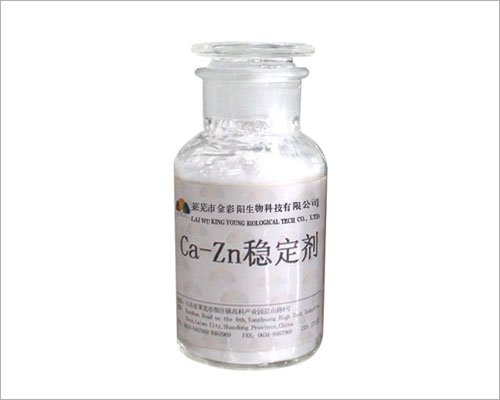Introduction to PVC and Various Additives (2)

Introduction to PVC and Various Additives (2)
The PVC plastic formula is mainly composed of PVC resin and additives, which are divided into heat stabilizers, lubricants, processing modifiers, impact modifiers, fillers, aging resistant agents, colorants, etc. according to their functions. Before designing PVC formulas, one should first understand the properties of PVC resin and various additives.
Raw materials and additives
lubricant
The function of lubricants is to reduce the friction between materials and the surface of materials and processing equipment, thereby reducing the flow resistance of the melt, reducing the viscosity of the melt, improving the fluidity of the melt, avoiding adhesion between the melt and equipment, and improving the surface smoothness of the product.
According to different forming methods, the lubrication effect is emphasized differently:
Rolling forming to prevent molten material from sticking to the rollers;
Injection molding, improving flow and demolding performance;
Extrusion molding, improving flow and mold separation;
Pressing and laminating are beneficial for separating the pressing plate from the product.
Classification of lubricants:
According to the composition of lubricants, there are mainly saturated hydrocarbons and halogenated hydrocarbons, fatty acids, fatty acid esters, aliphatic ester amines, metal soaps, fatty alcohols, and polyols.
According to the function of lubricants, they are classified into internal and external lubricants.
Its main differentiation is based on its compatibility with the resin. The internal lubricant has a high affinity with the resin, and its function is to reduce intermolecular forces; The affinity between external lubricants and resins is low, and their function is to reduce friction between resins and metal surfaces.
The distinction between internal and external lubricants is only relative and does not have strict standards for classification. In resins with different polarities, the role of internal and external lubricants may change. For example, stearic acid alcohol, stearic acid amide, butyl stearate, and stearic acid monoglyceride have an internal lubrication effect on polar resins such as PVC and PA; But for non polar resins (such as PE, PP), external lubrication is shown. On the contrary, polymer paraffin and other polar resins have poor compatibility, such as being used as an external lubricant in polar PVC, while being an internal lubricant in non polar resins such as PE and PP.
At different processing temperatures, the effects of internal and external lubricants also change. For example, stearic acid and stearic alcohol used in the early stage of PVC rolling forming mainly play an external lubrication role due to low processing temperature and poor compatibility with PVC; When the temperature increases, the compatibility with PVC increases, and it becomes an internal lubricant.
According to the composition of lubricants, they can be divided into: saturated hydrocarbons, metal soaps, aliphatic amides, fatty acids, fatty acid esters, and fatty alcohols.
1. Saturated hydrocarbons
Saturated hydrocarbons can be divided into non-polar hydrocarbons (such as polyethylene wax and polypropylene wax) and polar hydrocarbons (such as chlorinated paraffin, oxidized polyethylene, etc.) according to their polarity. Saturated hydrocarbons can be classified according to their molecular weight; Liquid paraffin (C16-C21), solid paraffin (C26-C32), microcrystalline paraffin (C32-C70), and low molecular weight polyethylene (molecular weight 1000-10000) are mainly used as non-toxic external lubricants for PVC.
(1) Liquid paraffin: commonly known as white oil, it is a colorless and transparent liquid that can be used as a transparent external lubricant for PVC, with a dosage of about 0.5 parts. The dosage can seriously affect the strength of welding corners.
(2) Solid paraffin, also known as natural paraffin, is a white solid that can be used as an external lubricant for PVC, with a dosage of 0.1-1.0 parts. Excessive dosage can affect transparency.
(3) Microcrystalline paraffin, also known as high melting point paraffin, has a white or light yellow solid appearance and is called microcrystalline paraffin due to its fine crystals. The lubrication effect and thermal stability are better than other paraffin waxes. The amount used in PVC is relatively small, usually ranging from 0.1 to 0.3 parts.
(4) Low molecular weight polyethylene, also known as polyethylene wax, has a white or light yellow solid powder appearance and poor transparency. It can be used as an external lubricant for PVC extrusion and rolling processing, with a dosage of generally less than 0.5 parts.
(5) Oxidized polyethylene wax is a partially oxidized product of polyethylene wax, with a white powder appearance. It has excellent internal and external lubrication, good transparency, low price, and a dosage of 0.2-1.0 parts.
(6) Chlorinated paraffin has good compatibility with PVC, poor transparency, and good effect when used in combination with other lubricants. The dosage should be less than 0.5 parts.
2. Metal Soaps
It is not only an excellent heat stabilizer but also a lubricant, with both internal and external lubrication effects. Different varieties have slightly different emphasis, and the lubricity is better with calcium stearate and lead stearate.
3. Aliphatic acid amine
It includes two major categories: monofatty acid amides and bifatty amides. Monofatty acid amides mainly exhibit internal lubrication, and the main varieties include ethyl bis stearamide, N, N ethylidene bis ricinolamide, etc.
4. Fatty acids
Qihong stearic acid G01 is a widely used lubricant, second only to metal soaps, and can be used in PVC. When used in small amounts, it has an internal lubrication effect; When used in large quantities, it acts as an external lubricant. The amount of stearic acid added is less than 0.5 parts.
5. Fatty acid esters
(1) Butyl stearate, appearing as a colorless or light yellow oily liquid, mainly provides internal lubrication and external lubrication in PVC, with a dosage of 0.5-1.5 parts.
(2) Monostearic acid glyceride, codenamed GMS, has a white waxy solid appearance and is an excellent internal lubricant for PVC. It has little effect on transparency and can be used in combination with stearic acid at a dosage of less than 1.5 parts.
(3) Ester wax and saponified wax mainly refer to the subsequent products made from lignite wax as the main raw material and through bleaching and other processes. Bleaching wax includes S wax and L wax, saponification wax includes 0 wax and OP wax. Mainly used for HPVC, dosage 0.1-0.3 parts.
6. Fatty alcohols
Stearic alcohol, with a white bead like appearance, has an internal lubricating effect and good transparency. It is used in PVC at a dosage of 0.2-0.5 parts. It can also be used in PS. Ruqihong High Temperature Lubricant GW-916916 is a polymer oxide with excellent performance as a functional processing aid, suitable for plasticizing and post release of PVC foam board products, increasing extrusion torque. As a high-temperature lubricant for PVC, the dosage is 0.2-0.5 parts.
Processing modification additives
1. The working principle of processing aids
Due to poor ductility of PVC melt, it is easy to cause melt breakage; The slow relaxation of PVC melt can easily lead to rough, matte, and shark skin on the surface of the product. Therefore, PVC processing often requires the addition of processing aids to improve the above-mentioned defects in its melt.
Processing aids are additives that can improve the processing performance of resins, with three main ways of action: promoting resin melting, improving melt rheological properties, and endowing lubrication functions.
Promoting resin melting: When PVC resin melts under a certain shear force under heating, the processing modifier first melts and adheres to the surface of PVC resin particles. Its compatibility with the resin and its high molecular weight increase PVC viscosity and friction, effectively transferring shear stress and heat to the entire PVC resin, accelerating PVC melting.
Improving the rheological properties of PVC melt: PVC melt has disadvantages such as poor strength, poor ductility, and melt fracture, while processing modifiers can improve the aforementioned rheological properties of the melt. The mechanism of its action is to increase the viscoelasticity of PVC melt, thereby improving off mold expansion and increasing melt strength.
Provide lubricity: The compatible part of the processing modifier and PVC first melts, promoting melting; The parts that are incompatible with PVC migrate outside the molten resin system, thereby improving demolding performance.
PVC processing modifier K-311 is an acrylic processing aid prepared by lotion polymerization process,
It can promote the melting of PVC at low temperatures, enhance the cohesion and homogeneity of PVC melting, and reduce processing temperature.
Gives products excellent transparency, especially suitable for high transparency products and high-quality profiles.
Improve the rheological properties of PVC, promote the plasticization and melting of PVC resin, and improve the appearance quality of products.
Especially suitable for the processing and molding of PVC high transparency products.
2. Commonly used processing modifier - ACR
ACR is a copolymer of methyl methacrylate and monomers such as acrylate and styrene. In addition to being used as a processing aid, it can also be used as an impact modifier. The ACR in China can be divided into several types: QH201, QH301, QH401, and QH402. Foreign brands include K120N, K125, K175, P530, P501, P551, P700, PAl00, etc..
The important role of ACR processing modifiers is to promote the plasticization of PVC, shorten the plasticization time, improve the uniformity of melt plasticization, and reduce the plasticization temperature. Table 4 shows the effect of ACR on plasticization time, temperature, etc. measured using the BLANBENDE plastometer.
ACR201 or ACR401 is generally used in PVC plastic door and window profiles, with a dosage of 1.5-3 parts.
| Previous:Introduction to PVC and Various Additives (III) | next:Introduction to PVC and Various Additives (1) |







